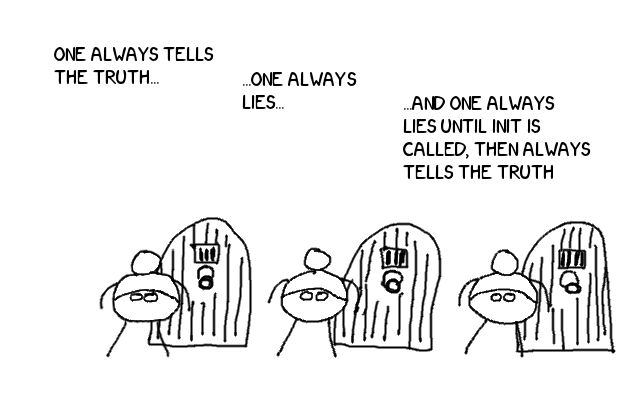The Case for Exceptions Part 4: Invariance
In C++ there is one situation where it is only possible to use exceptions to report an error - when object constructors can fail. In exception-free code bases this leads to the additional requirement that constructors must always succeed. For certain design patterns having constructors that always succeed can simplify code - but in this article I want to look at the knock on effect this decision has on the design of the entire system, and how exceptions actually permit a simplified, more coherent design.
To understand how this comes about, I first need to explain the way I view object design. Most objects can be classified into one of three types:
- Data
- Functional Objects
- Data + Invariants 1
Data objects are merely containers for data, where the set of valid states for
objects is the outer product of the set of valid states of the members of the
object. In C++ I typically represent this type of object with a struct. These
are most often used for “options” structures, or to logically group objects that
fall into the other categories. Sometimes we might use a class to represent
this type if the class is a form of “state-space” mapping, for example, a class
that stores fixed point values in a 32 bit signed integer has the same number of
states as the signed integer, but the states have different meanings. Because
there are no invalid states, it is always possible to construct such a class in
a valid state, provided that the same is true of the members of the class.
Functional Objects are abstractions for some functional operation. In C++ these are often lambdas and they may include some state that is part of the algorithm or some configuration that determines how the algorithm should operate. It is possible, but not essential, for exceptions to be used to handle invalid inputs when the constructor accepts inputs such as data or configuration. However, it is also entirely possible to design objects in this category such that they are always constructed in a valid state.
The last type, Data + Invariants (D+I), is the one we are most interested in. It is also the one that most objects fall into. Unlike data classes, the set of valid states of D+I classes is a subset of the outer product of the valid states of the member variables. The operations on a D+I class represent the invariant-preserving operations that can be performed on the data. D+I classes are useful because they help to reduce the set of valid states of the system. In “On Testing Part 2” I talk about the different layers of the test pyramid. With D+I classes we can test that invariants are preserved at the unit level, and then assume that the invariants will hold at the levels above. Thus, we implicitly increase the coverage of the higher level tests.
So why are exceptions beneficial to D+I classes? Well, it comes down to the
strength of the invariants. If the initialisation of a class can fail then
without exceptions we need to split the initialisation between the constructor
and an initialisation function (the init method). This means that between the
constructor and init call the class can exist in an uninitialised state.
This greatly weakens the invariants on the class, as they must all accommodate
this possibility. In turn, all users of the class should also consider the
case where the class is in an uninitialised state. In essence we must push the
testing up the pyramid from the unit level to the integration level, where it
is much harder to cover all the possible states of the system.

Objects that can exist in an uninitialised state are analogous to pointers, and it is generally poor form to assume that a pointer is not NULL. However, if you do all your initialisation in your constructor and fail with exceptions, then you can add ‘the object is always initialised’ to your list of invariants, and so it becomes easier and safer to make assumptions about the state of the object.
So exceptions can strengthen object invariants, but this comes at the cost of having to maintain invariants in an exception-safe fashion. It is true that exceptions can make this more difficult because the occurance of errors can be hidden - however, the requirement to maintain invariants through error conditions is not additional, all code that handles errors must meet this requirement.
Toward the end of the series I intend to look at the practices you can employ that make the process of writing exception safe code easier, and hopefully we will be able to look at how to go about preserving invariants. For now though, that’s the end of this part of the series. In the next part I continue to discuss the benefits of exceptions.
-
You might wonder where interfaces fit in this categorisation. My view is that interfaces can fall into any of the categories. Some interfaces are just “accessors” for data which do not specify how that data is represented. Some are “accessors” for functionality, and some provide an interface that preserves invariants of one form or another. ↩